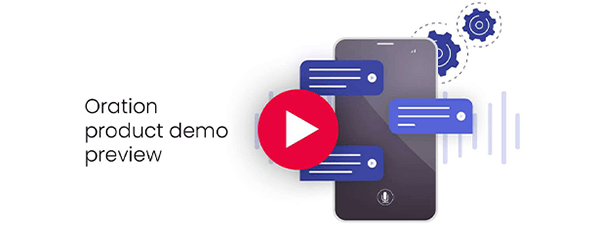We all know speed is crucial in the contact centre world. Ask most people what they want most when they reach out to a company and they will tell you a fast resolution to their enquiry. Indeed, one study1 of 107 million customer support interactions found that speed was the most important factor that improved customer satisfaction (CSAT) scores.
What should not be forgotten in the rush to help people as quickly as possible is the importance of empathy. The same survey revealed1 the second most vital factor for improving CSAT scores was whether callers felt an empathetic human connection with the agent they spoke with. Taking the time to genuinely listen to one’s needs cannot be understated, with 86% of customers saying they are more likely to do further business with a company if they share a positive emotional connection with a contact centre agent.
The challenge for contact centres is that demanding an unwavering commitment to empathy while focusing on optimising average handle time (AHT) can put agents in a difficult position. It goes without saying that being fixated on decreasing the average length of customer calls does not always align with fostering positive interactions, with few things likely to frustrate people more than the sense that agents are more focused on the clock than their issues or concerns.
For this reason, contact centre managers should take a proactive approach to help their agents achieve the perfect blend of speed and empathy. This can include crafting empathetic scripts to follow on calls, teaching skills such as active listening, incorporating role-playing into training and helping agents identify vulnerable customers who may require extra sensitivity.
Then there is the role that technology––in particular, AI intent recognition - can play in driving empathy back into the conversation.

What is AI intent recognition?
In a world in which conversational AI is playing an increasing role in helping meet the needs of contact centres and customers, AI intent recognition is a critical feature in their architecture. Also known as intent classification, it is a form of Natural Language Understanding (NLU) that takes written or spoken input and classifies it based on what the user wants to achieve.
On a wider scale, intent recognition has been a game-changer for customer experience. By using speechbots and chatbots that boast the technology, businesses have been able to scale and meet customer demands more quickly and allow their contact centres to respond to enquiries intelligently, accurately and empathetically.
How do NLU-based chatbots recognise intent?
Like a human agent, conversational AI has to be trained to understand intent and this is typically done through the review of customer interaction data. For example, how customers are responding to a question such as “how may I help you?” and each response is labelled with an intent, enabling the NLU to learn how to classify responses, even those it has not seen before. This training data is a representative sample of raw data manually labelled or organised in the way one wants their machine learning model to do automatically.
The set of intents discovered through the training phase is used to establish how the voice or chatbot should respond to the user. A set of conversational flows is crafted for each intent, which may include follow-up questions to clarify the user’s intent or to collect additional information necessary to assist with their enquiry.
Also important is how effectively and rapidly the training data can be maintained and updated, as well as how the corresponding conversational flows can be maintained and updated. This is a key differentiator for ground-breaking solutions such as Convai’s Oration as it enables rapid time to market and reduces barriers to getting critical changes implemented quickly.
How do chatbots recognise emotion?
The ability for chatbots powered by intent recognition to identify user emotions is all about text detection. Just as a virtual assistant can extract important features and intents to understand a message, Oration can flag the intent by identifying emotive language and has a built-in profanity filter.
By recognising certain words, phrases, punctuation and even capitalisation, chatbots can understand the tone of a message and react in an appropriate manner – for example, with empathy – and foster a more positive experience for the user.
Intent recognition in practice
Convai’s Oration includes a range of features that embrace the power of intent such as Advanced Speech Recognition (ASR), which enables spoken language to be interpreted and converted into text so it can be used to apply call intents and extract information. A highly effective language model, Oration’s Transcription Software for Contact Centres can also recognise customers’ natural language and creates an accurate transcription so the correct intent is applied and key information is extracted.

Summary
Most people will likely have had a conversation with a chatbot that left them feeling underwhelmed. Sure, they may have got the answer they wanted but it may have felt one-dimensional or, dare we say it, robotic. The good news is that AI intent recognition is rewriting the script. As technology evolves, people who reach out to contact centres should prepare to engage with more chatbots that display increased humility, better active listening skills and more empathy.
Amid a technological revolution that shows no signs of slowing down, enhancing digital customer experience should be a priority for all organisations. Learn how companies are ensuring they have the resources to thrive in the modern world and explore specific software and platforms that can help.
Reference
1 https://www.linkedin.com/pulse/boost-contact-center-customer-experience-cx-empathy-david-filwood/







